Marketing Segmentation: Probably The Best Guide In The World
Intro
A Really Useful Guide on Marketing Segmentation
Marketing is essentially a marketing segmentation game. There are countless shiny tools, channels, magical chatbots and everything in between, but ultimately all marketing success comes down to connecting what you’re selling to the right people and communicating it in a way that helps them understand you’re satisfying their needs/wants.
This three-part series digs into the three most important types of segmentation, Demographic, Geographic and Psychographic. By the end of the guide, you’ll hopefully have some super actionable ideas to slice and dice your data to better communicate and better sell. If you want to see how segmentation can be applied to the consumer decision-making journey, check out our guide here.
Chapter 1: Demographic Segmentation
What is demographic segmentation?
The definition of the word ‘demographic’ in the dictionary is “a particular sector of a population.”

In a nutshell, it’s information about who we are and what we like.
In marketing the most common form of demographic segmentations are:
- Age
- Gender
- Income
- Relationship status
- Education
- Occupation
These are all macro forms of demographic marketing segmentation and are the easiest ways to segment audiences, as most tools and advertising platforms you use will have this information at your disposal.
These traits are common to all people – we all have an age, gender, income level, and relationship status.
There are also micro forms of demographic segmentation where you drill into the next layer of demographic segmentation.
For example, on Facebook you can target parents who have children of a specific age:
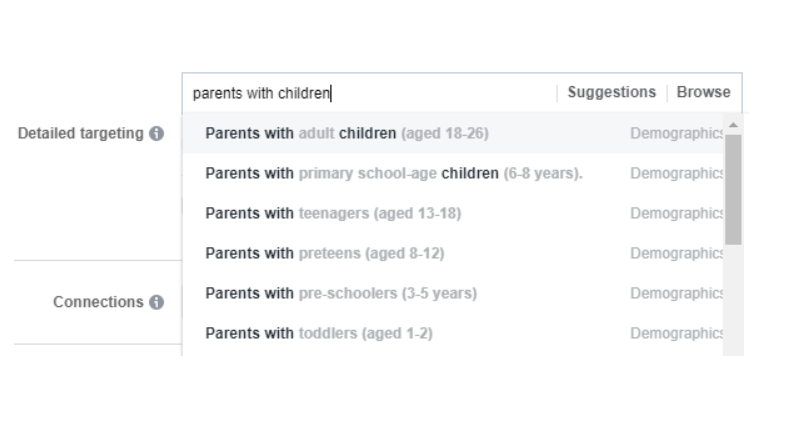
You can also segment by relationship milestones such as newly engaged, or segment by people who have recently moved house or moved to a new job:
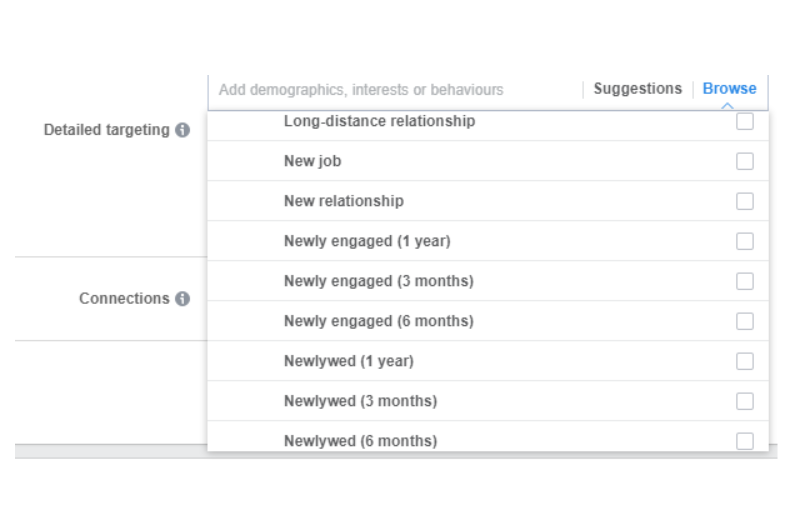
The Facebook algorithm can even work out the political stance of its users (for USA only):
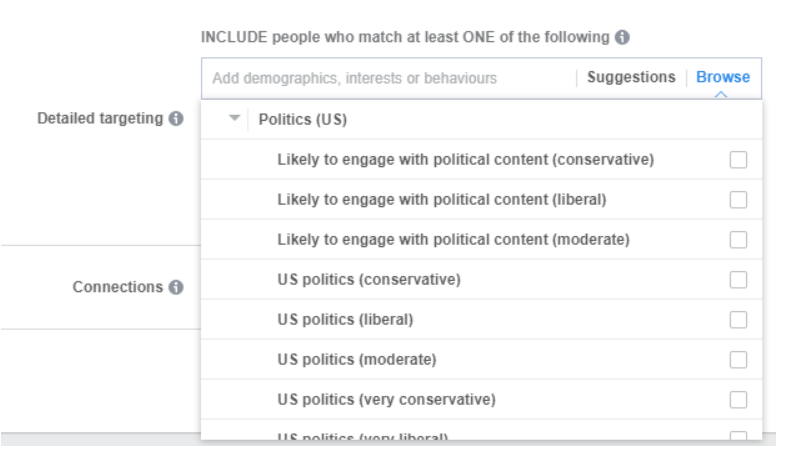
This form of micro demographic marketing segmentation for an ecommerce business selling hunting gear, for example, would allow the business to exclude people with specific political views to ensure they do not show their products to the wrong users.
Micro demographic segmentation has the advantage of really honing in on your ideal customer. The caveat is that this data is much harder to obtain and often less accurate than broader forms of demographic segmentation.
It would take you a lot of time and money to acquire that information outside of using ad platforms such as Facebook and Twitter, who not only make it easy, but do so with a great level of accuracy thanks to their learning algorithms that we would not be able to match.
When to Use Demographic Segmentation
Demographic marketing segmentation is best used to identify which population of people are most suitable for your product and when you’re ready to scale and reach new markets.
The first step of bringing your product to the market is to find out who will be interested. Let’s say you’re selling a product to new mothers in the US, which accounts for around 1.2 million people per year.
Once you understand your market size, you can start to make estimates on how much you can expect to grow each year and which demographics to focus on first because they are of more value.
If you’re bootstrapping your business and only have a limited marketing budget, you should make your market size even smaller to start with to have the best chance of success.
To carry on with our example of selling products to new mothers, your primary demographic for women would be:
- 23-year-old females without a college degree
- 30-year-old females with a college degree or higher
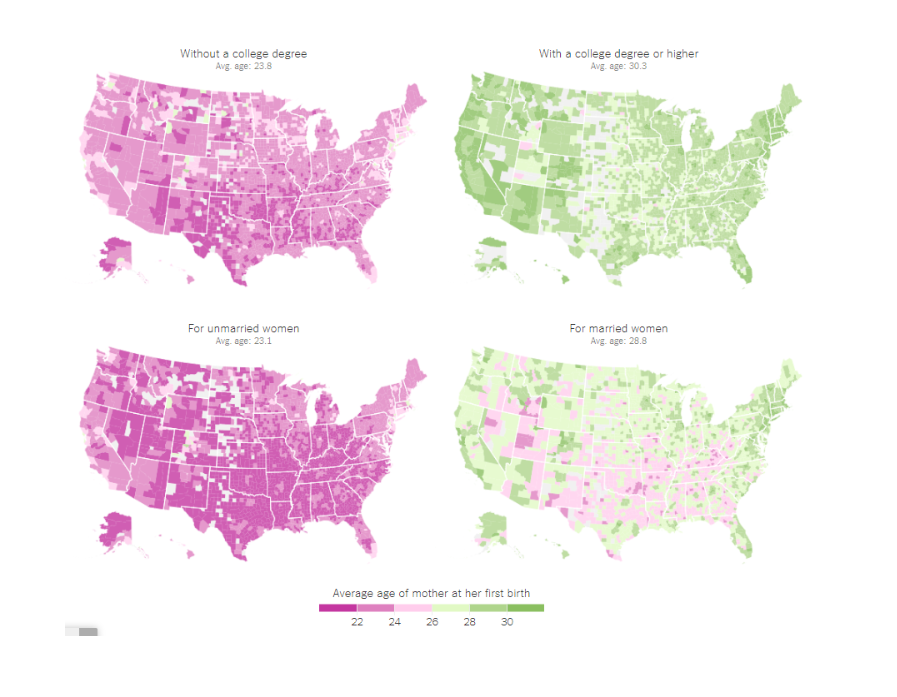
In the example above, gender, age, and education demographic segmentation has been used to identify two target markets for companies selling baby products.
We started off with one overall market size which has now been split into two smaller demographic segments.
After doing more research you may realize that it’s worth focusing all your efforts on ‘30-year-old females with a college degree or higher’ because they have more of a disposable income and are less price sensitive, yielding you a better CPA.
Then as your business grows and you want to expand, you could start targeting the other demographic of ‘23-year-old females without a college degree.’
This is how demographic segmentation ought to be used. Find the groups who are interested in your product and then make data-driven decisions on how to approach each group.
The #1 reason startups fail is because there was no market for their product:
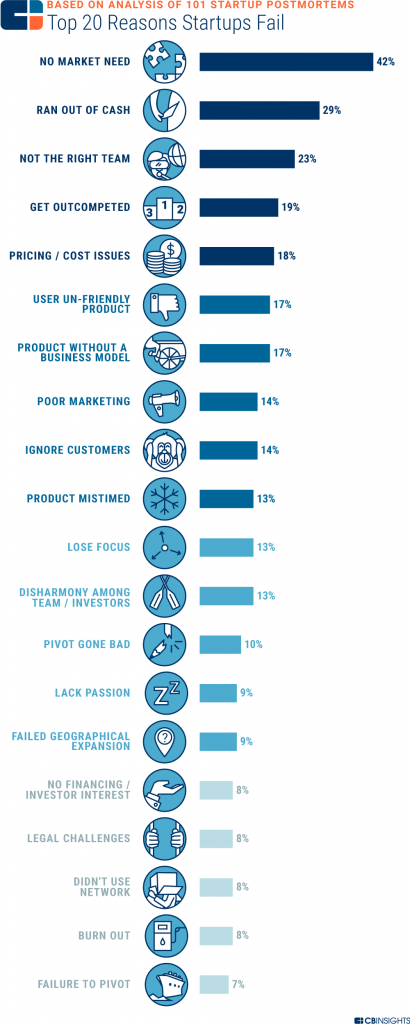
Another mistake I see many businesses make is losing thousands of dollars on advertising by targeting the wrong demographics.
What do you do when you see an ad that is not relevant to your needs?
You certainly don’t click on it. This leads to low click-through rates and poor ad quality/relevance scores on Facebook and Google.
AdEspresso found a direct link between higher costs per click (CPC) and ads with low relevance scores.
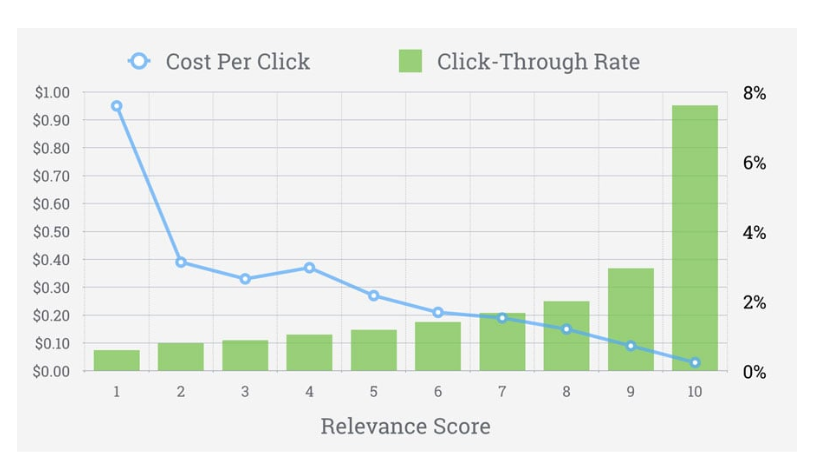
You can end up paying a lot more in clicks and impressions if your ads are not targeted correctly.
Real-Life Examples of Demographic Segmentation
I saw this advert from Public Rec on Facebook and felt they did a great job in targeting me.
I’m a male, I work in an office, and yes I love wearing sweatpants because they are so comfy!
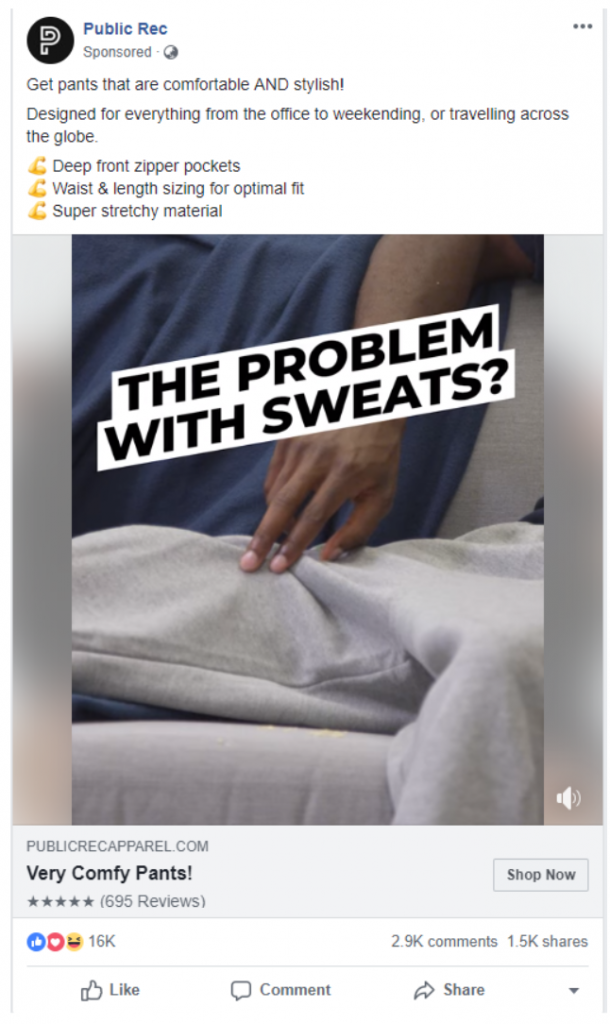
When I dug further to see why I’m being shown this advert (I wanted to validate they didn’t use the interest ‘lazy’ or ‘messy male’ to target me), it turns out that they are only targeting males:
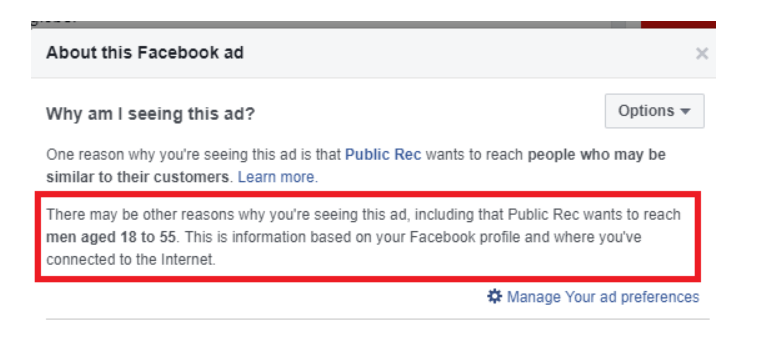
The gender makes perfect sense as very few women would be interested in buying men’s sweatpants except as gifts.
I love their ad copy and gender targeting; however, they failed to really make use of age targeting.
They are positioning their product as sweatpants you can wear in the office, but very few men aged 18-24 work in offices (they will likely be studying) or have disposable income to buy a pair of sweatpants that cost more than $90.
Targeting the 25-35 age group may yield them greater results, as I don’t know many men over that age that wear sweatpants.
To get the best results from demographic marketing segmentation it’s worth stacking two or more metrics together to refine your audience. In this case it’s gender and age or gender and education.
Artsadd used micro demographic marketing segmentation to show me an ad to create my own ecommerce business (a drop-shipping store):
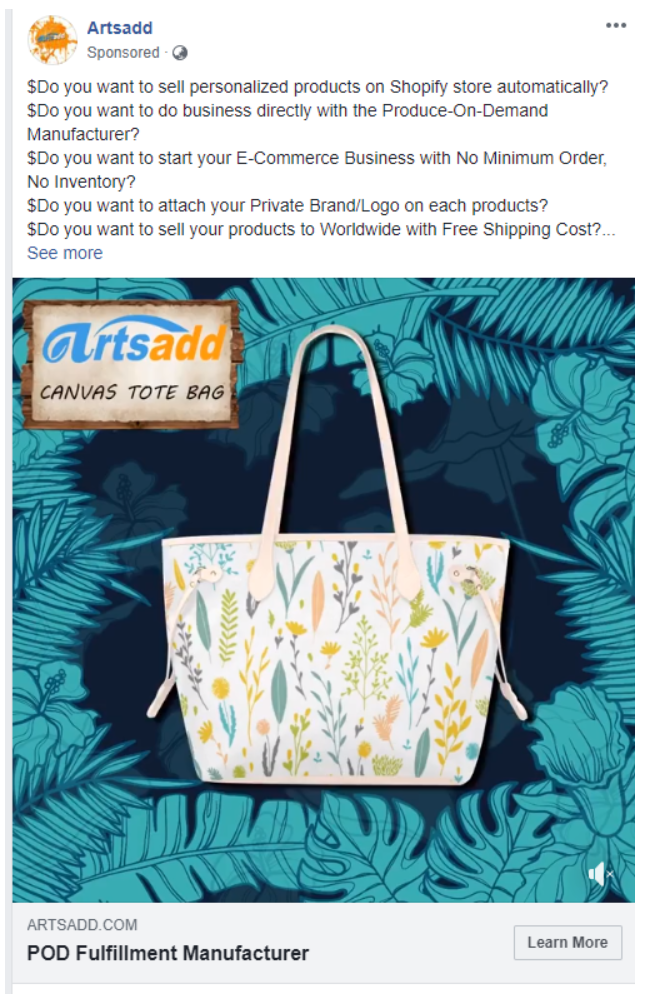
I know this because when I looked into why I was shown this ad, it was because I showed an interest in Shopify:

As mentioned, micro marketing demographic segmentation is a lot hard to do as in many cases you won’t have the data yourself to do it. Facebook allows you to target specific interests but don’t hand you any data.
If you want to gather your own micro demographic data from customers and prospects, surveys are one of the best ways to learn more about your customers.
Alternatively, sign up to services such as Nielsen and Acxiom where you can buy a subscription to get access to their big data. It’s not cheap, but you do get a wealth of information on customer demographics.
On the flip side, here’s mega retail brand Levis completely ignoring any type of segmentation and sending a generic email to their entire list:
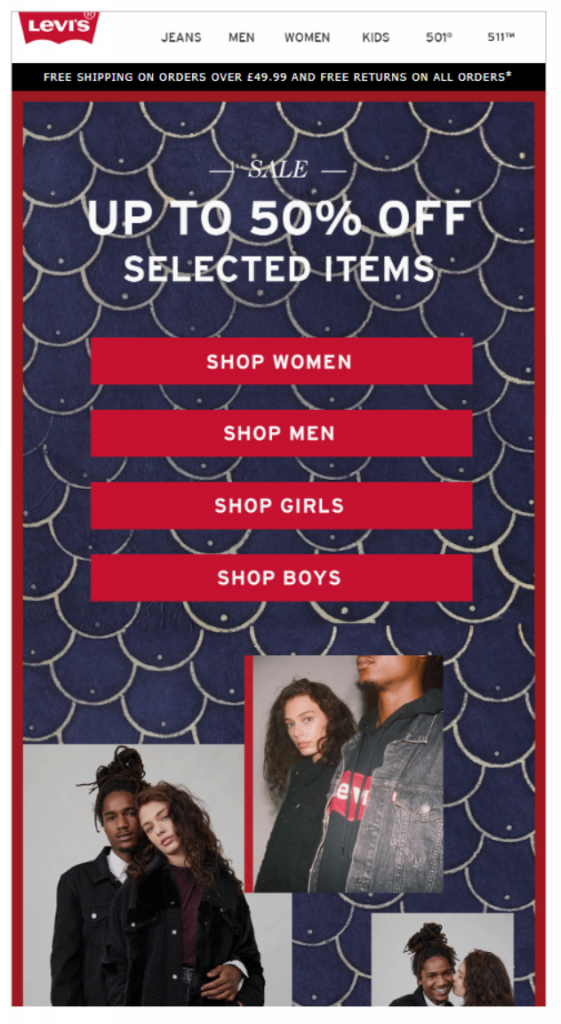
In 2017 it was also rated by marketers as the #1 marketing medium to personalize the user experience:
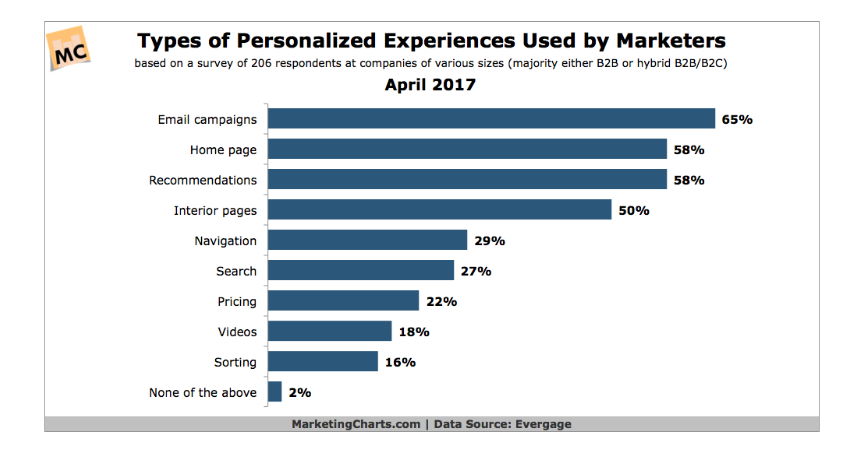
All Levis had to do was segment by gender to personalize their email. Even if they didn’t know my gender they can use tools like Gender Gap Grader which tells you the likely gender of a user by their name.
Even the best brands ignore demographic marketing segmentation, which can end up costing them thousands of dollars in revenue.
Summary
Demographic segmentation is one of the simplest forms of segmentation to apply to your business, but it is also the most important.
If you’re unable to clearly define your ideal customer using macro demographic segmentation then you’ll find it incredibly difficult to run a profitable ecommerce business.
When running any type of marketing campaign, finding out your customer lifetime value, creating the right brand message, or deciding which new products to source, you’ll need to revert back to demographic segmentation to get the answers to your questions.
Chapter 2: Geographical Segmentation
What is geographical segmentation?
Geographical marketing segmentation is the process of splitting up your audience, pricing, and products based on location.
You can apply geographical segmentation at many levels, the most popular being physical location:
Regional (Asia, Europe, North America, South America, Africa)
- Country
- State
- City
- Radius distance (i.e. 25km from your store)
For example, if you only deliver to a particular area then segmenting your audience by country, state, or city is a smart way to target users who can actually buy your products.
You can also apply geographical segmentation into rural, suburban, and urban areas.
For example, Bicycle Warehouse has split their bicycles (product) into a number of categories including urban, suburban, and rural segments to make shopping easier for visitors based on the terrain they are surrounded by.

When advertising their bicycles on Facebook or Google, they could show specific categories based on a user’s location. For example, someone living in Miami would see Bicycle Warehouse’s selection of urban bikes, whereas someone living in more rural or mountainous areas will first come across mountain and gravel bikes.
There’s nothing stopping you from stacking segments together to refine your marketing efforts.
A great one to do is to combine geographical and demographic marketing segmentation.
For example, you may find that your most profitable customers are located in New York (geographical) and are in the 35-55 age group (demographic), with this customer segment spending 200% more than all other customer segments.
In this example it would make sense to allocate a larger amount of marketing resources to New York as these geographical and demographic segments yield a more profitable ROI than other cities.
You could take this one step further and combine behavioral marketing segmentation by seeing which devices these customers use.
Do note that the more segments you combine, the sharper your audience is, but also the smaller it will be.
This becomes an issue when you want to scale your paid marketing efforts on Facebook and other platforms.
You cannot scale small audiences as what often happens is the same subset of people will see your ad over and over again. You’ll want at least one million people in any audience size when scaling, and even more when spending $500 or more per day.
While less frequently used, you can even change the price of your product or service based on a user’s location. This is also known as dynamic pricing.
Depending on your product margin, it may not always be suitable to use geographical marketing segmentation to change price because of margins, and it is typically used by service-based businesses that are looking to scale.
When to Use Geographical Segmentation
There are many instances when it makes sense to use geographical marketing segmentation.
The two most important areas are messaging and customer acquisition.
If you’re a local ecommerce business that offers same-day or next-day delivery to anyone within a 50km radius of your warehouse, then you don’t want to target anyone outside of that area with your offer as you cannot serve them (customer acquisition).
Let’s say your monthly marketing budget is $1,000 and you can ship your product anywhere in the US. Would it be better to target at a country level or to focus on a single state or city?
While we don’t know the results until testing, I’m pretty sure that if you focus on a state or city level with a much smaller budget you’ll see better results.
Why?
Because you can portray a much more powerful message.
The bigger your geographical audience, the more watered down your messaging will become.
People on the East Coast of the USA speak, react, and do things much differently than people on the West Coast.
Ad images and text can also differ based on climate. At the time of writing the weather was 19°C in Los Angeles while 1°C in New York.
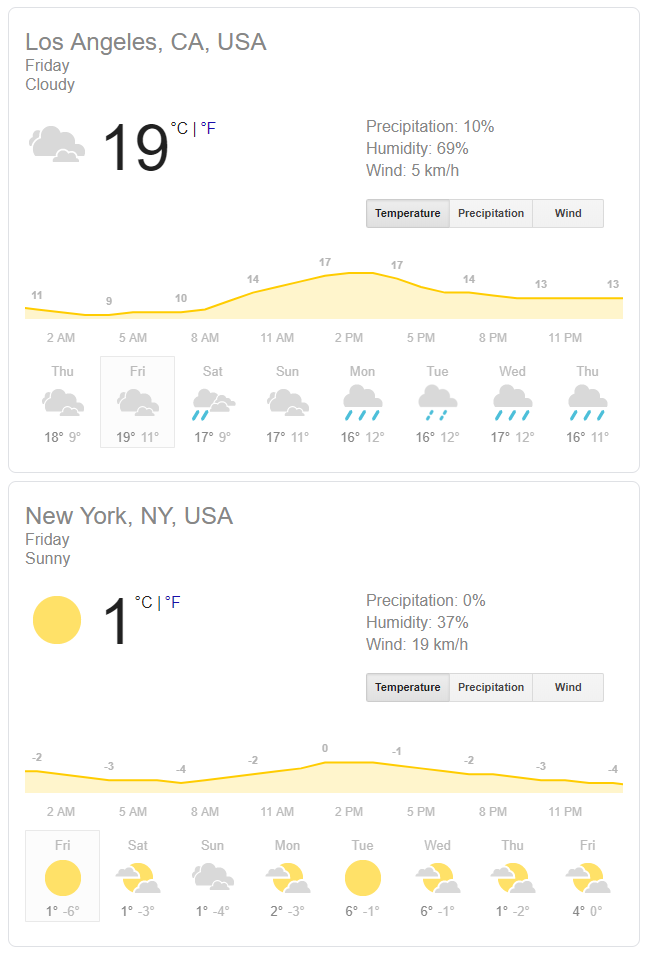
If you’re selling clothing apparel, you’d want to be serving scarves, gloves, and more winter wear clothing in New York than summer wear.
When I visit the UK, the way people talk differs from city to city, and that is true for most parts of the world.
When I run ads targeting a specific city, I’ve found that using non-aggressive slang terms yield more ad interaction and click-through rates, and this is down to greater ad personalization.
Here’s a cool infographic showing how Americans on different coasts interact online:
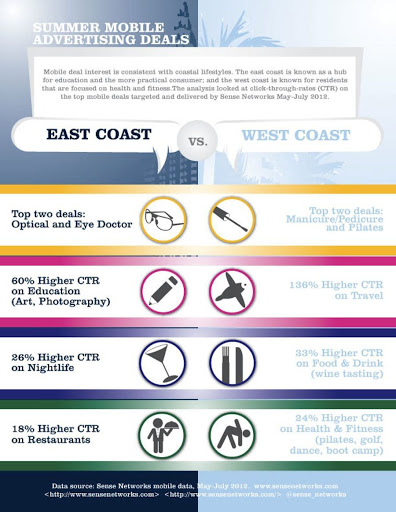
By segmenting by geographical location you can fine-tune your messaging to relate to users in each location. Never assume everyone is the same.
Not to mention that if you ship overseas you may want to display the pricing in another country and even use a different language.
Real-Life Examples of Geographical Segmentation in Use
For major brands like H&M, who have stores all over the world, it wouldn’t make for a good user experience if they had a single website to cater for all visitors.
Wherever you are in the world reading this, type in ‘H & M’ into Google and you’ll be redirected to their homepage of the country you’re currently in (I’m in Thailand right now):
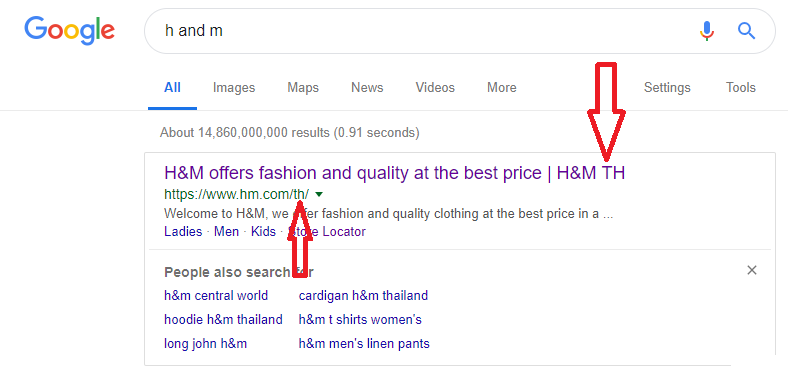
Their level of geographical segmentation doesn’t just stop there. On visiting the UK website most of their models are English, which makes sense because it gives UK shoppers a better idea of how they would look in the shirts:
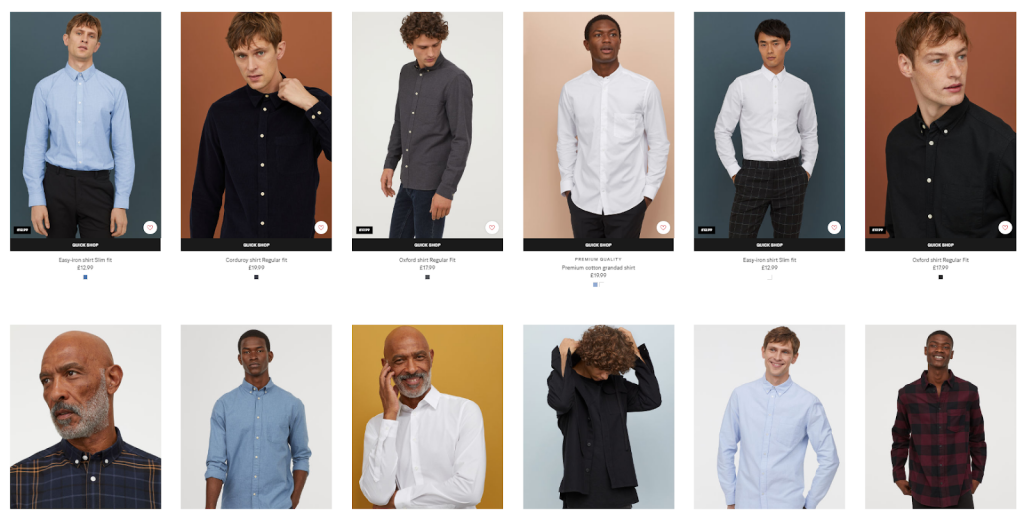
On the H&M China website there are more Asian models used to show shoppers how they may look in various items.
H&M is a great of example of a brand that uses geographical segmentation as a form of marketing segmentation at every step of the customer journey to serve the right message to the right customer.
Here’s a Facebook advert for Camping Life that targets men in Thailand to try out their waterproof outdoor pants.

This ad was served to me because at the time of writing I was based in Thailand.
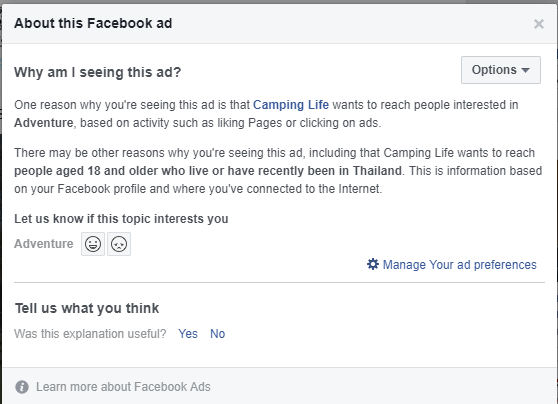
For four months of the year Thailand is in wet season and a pair of waterproof pants can certainly come in handy.
Wet season lasts from July until October. While they got the targeting and product right, they were a few months late with serving this ad in January.
Nike uses geographical segmentation to break up their social media accounts by country to enable better branding.
Their UK account uses hashtags that fans living in the UK can relate to, with sports stars in their images mostly being from the UK:
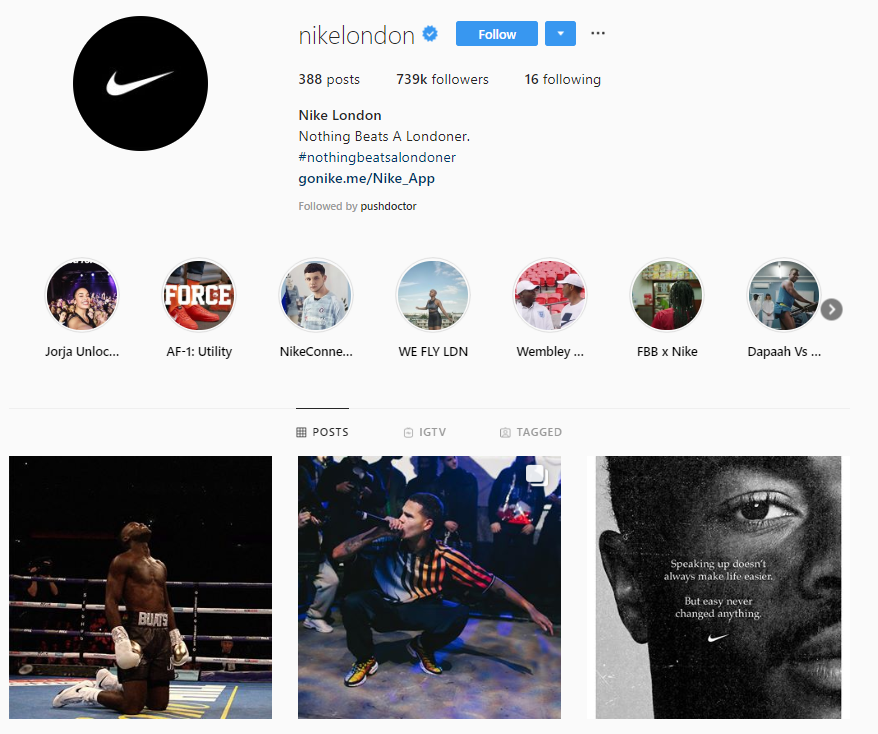
Whereas on their USA Instagram account, they primarily focus on US athletes who their audience will know.
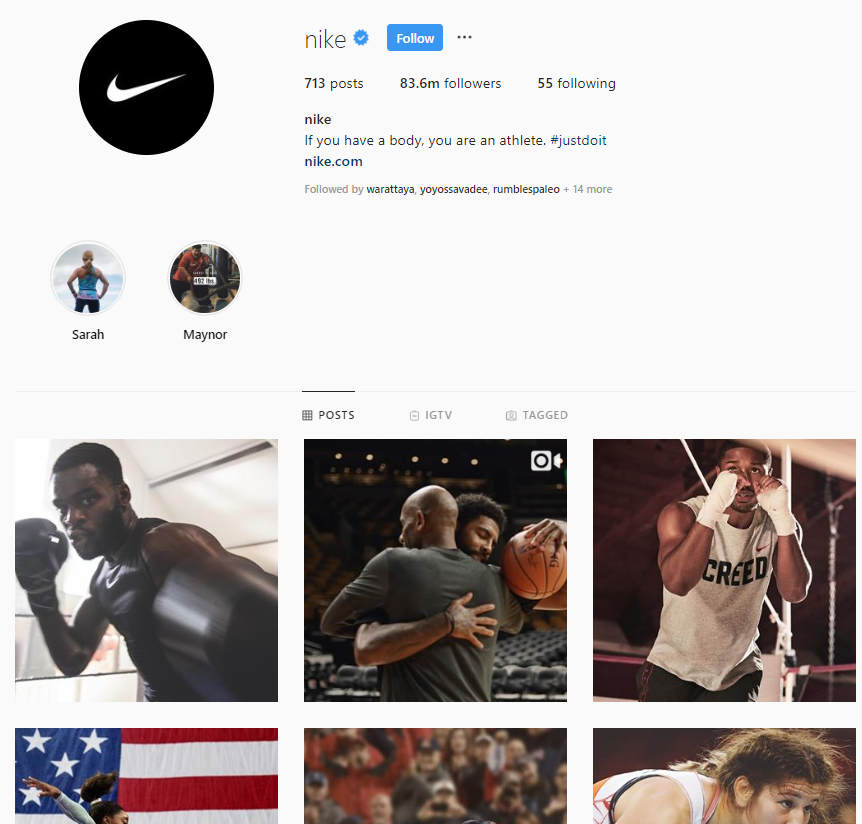
Spotify use geographical segmentation to decide which price to charge customers.
Did you know that the price of a Spotify Premium membership in the UK is £14.99 per month, whereas for the same service in Thailand it’s 199b (£4.90)?
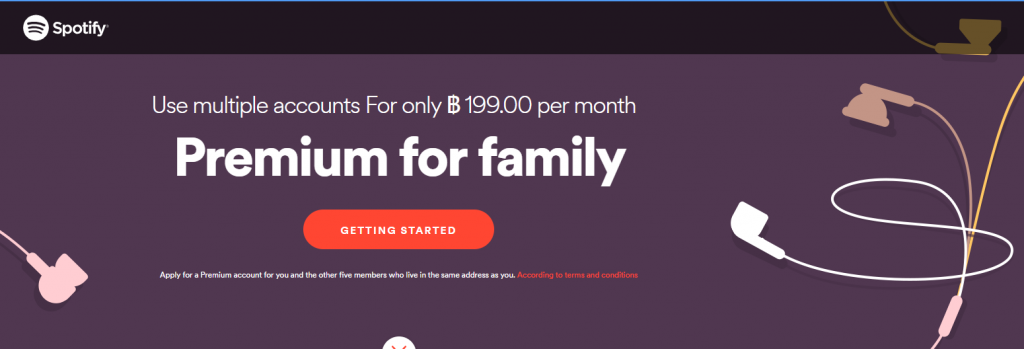
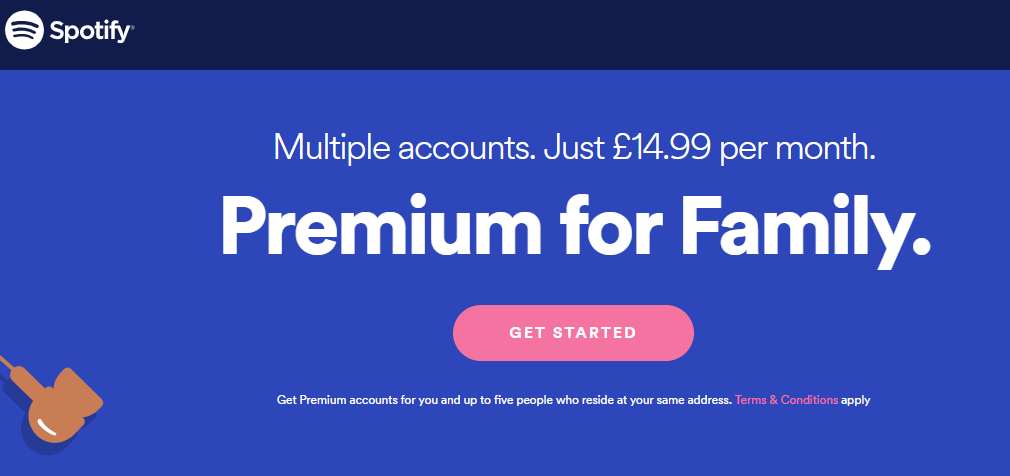
That’s a 300% price increase if you live in the UK.
The reason that Spotify uses geographical segmentation for its pricing is that in order to penetrate the Asian market, it needs to offer a lower price as the monthly salary in Asia is much less than the UK (the UK ranks at #18; Thailand ranks at #118).
With four good examples of geographical segmentation, here’s what happens when you disregard it altogether.
Fuji Airlines are showing me a non-stop flight from Hong Kong to Fiji:

What’s wrong with this ad? Well it looks great and reads well.
However, to actually get on the flight I need to be in Hong Kong. This ad is being shown to people in Thailand.
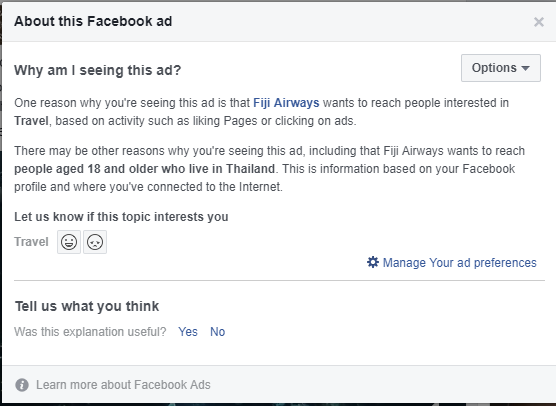
The advert also states the price in Hong Kong dollars which is irrelevant, and I have no idea how much that is when translated into GBP or THB.
This is a fine example of improper targeting and poor messaging because they did not use geographical segmentation for this campaign, and if they did, they did it wrong.
Summary
There are many ways you can use geographical segmentation as part of your marketing strategy.
In most cases it will be used as a tool to acquire the right customers and serve them the right message.
On its own it can also be used as a tool discover where your typical customer is located and in which regions your product or service will sell better. When combined with other segmentation practices you can really start to dig into more important findings, such as who your best customers are and which products are best suited to which geographical location.
Chapter 3: Psychographic Segmentation
What is psychographic segmentation?
Psychographic segmentation is based on breaking up audiences by their personality traits.
The most common traits to use are:
Lifestyle – What type of lifestyle does your ideal customer fit into? As we age (sorry to remind you), our styles and interests alter. Our capabilities often alter too!).
For example, in my teens I was wearing oversized rock t-shirts and strongly considering getting a ponytail (yes, I’m brave enough to admit that).
Today, in my thirties, I tend to wear mostly casual t-shirts and chinos as it’s most appropriate for my current lifestyle of work and travel.
Lifestyle brands have never been bigger than right now.
ASOS is one of the biggest fashionable clothing retailers out there. Their product range always includes something unique and at the forefront of fashion:
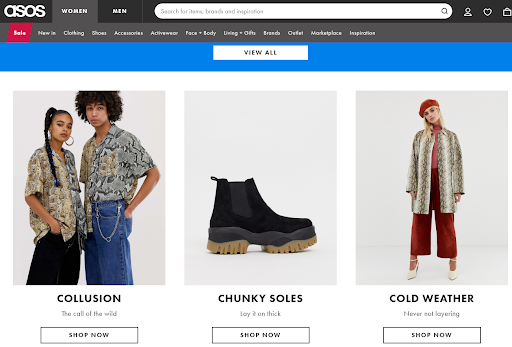
I wish I could get away with wearing those clothes at my age (maybe I need to bring back my ponytail).
After doing a bit of research on ASOS’s target market, I came across a useful comparative Analysis for ASOS which said:
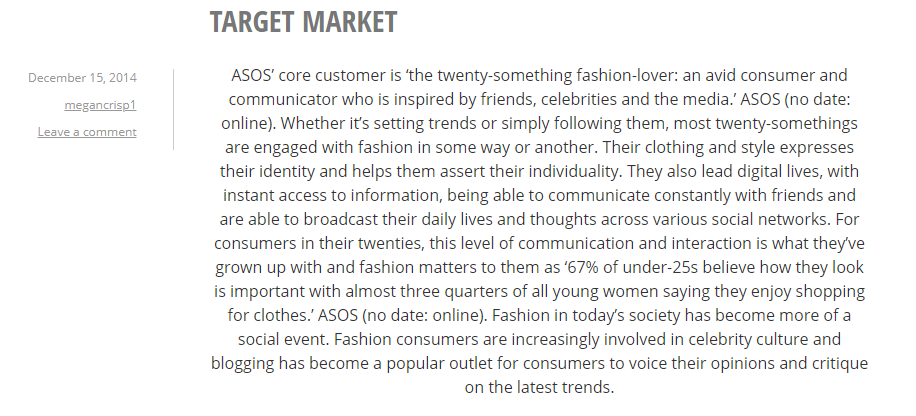
ASOS’s target audience is twenty-somethings who love fashion and are inspired by friends, celebrities and the media.
When ASOS decide which products to put online, they are continually doing psychographic segmentation on their audience to find the right fit.
You can go through their catalog images and see that they combine this with demographic marketing segmentation as most of their models appear to be in the same age rage:
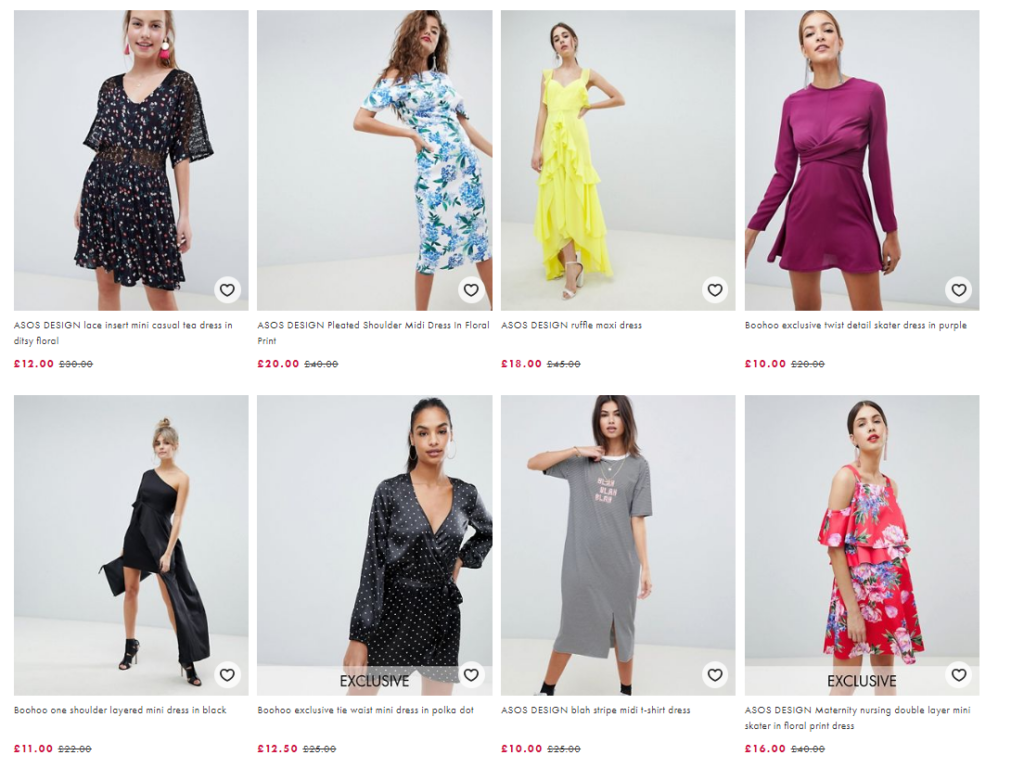
Criquet Shirts are doing the exact opposite of ASOS and are turning back the clock to produce men’s apparel that remind them of the early days of prep school, which is mentioned in their brand story:
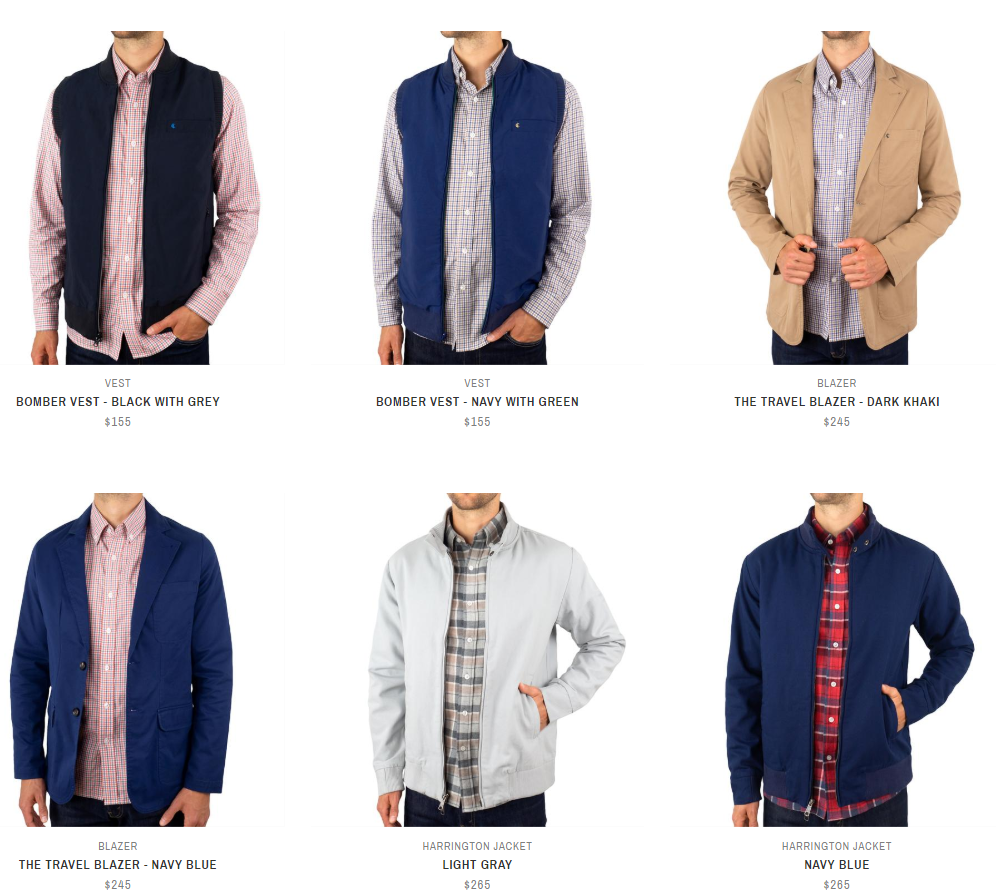
These products are aimed at men in the mid stages of their life (35+) and is a huge contrast to ASOS. The models they use on their website are all above 30 years old too.
These are two fine examples of psychographic segmentation by lifestyle to identify a market segment.
Activities/interests – This is also part of psychographic marketing segmentation and great to use when running ads to specific audiences.
When I research customer interests I typically start broad and then narrow them down in layers.
For example, if I were selling football shirts of teams in the English Premier League, I may layer my interests like this:
- All football fans (worldwide)
- All football fans in the UK
- All football fans of Premier League teams
- Fans of each specific team in the Premier League (20 in total)
At each step the audience becomes smaller but also more defined. You’ll need to decide yourself on how narrow you want to go. As mentioned, the narrower your audience, the harder it is to scale.
As a rule of thumb it’s best to go broad when starting out and then keep narrowing until you start to see results. If you try to kick off far too narrow you may miss audience segments that perform even better than what you had planned.
Social class – This is probably the easiest category of psychographic segmentation to understand. There are three main classes to choose from:
- Upper class
- Middle class
- Working class
Note: you can split each class into two by having a top and bottom. For example, you can split upper class into top upper class and bottom upper class and do the same for middle and working class.
The upper class is the demographic that has the most wealth and power, followed by the middle and then working class.
The upper class makes up the smallest segment, usually of around 3% or less of the population, which can be broken into two demographics.
New Money – This group consists of people who made their money recently from investments or businesses.
Old money – This group consists of families who have been rich for generations and their family has significant stature in their community.
The middle class are typically known as white collar workers. Their status is based on their wealth, level of education, and prestige in their community. Think doctors, lawyers, and successful small business owners.
The working class are typically known as blue-collar workers with minimal levels of education and are often in job roles where there are very few opportunities to climb the career ladder.
If you’re offering high-ticket items such as 5* package holidays to the Seychelles (considered one of the most expensive holiday destinations on earth), then using social class as a form of segmentation will help you serve ads to the right audience.
Depending on the product or service you offer, you may want to split class groups into ‘aspirational’ vs. ‘capability’ instead of the above, as in this current day and age it can be more relevant.
For example, in the USA the data shows that new car sales are making higher sales records while most Americans cannot afford to own one based on their median household salary.
Consumers borrow money so they can live the lifestyle they want. This applies to all working classes, and some ecommerce stores like Amazon have started to offer financing options to cater for people with aspirational habits.
Values and attitudes – These are, in my opinion, the most important psychographic factors for ecommerce businesses.
You can find brand values on a number of websites where the company states what they believe in and who their product is for. This match of values has been a key driver of the success of influencer marketing. To give you an idea of how important values and attitudes are, it’s estimated that between $5-10 billion will be spent on influencer marketing by 2020:
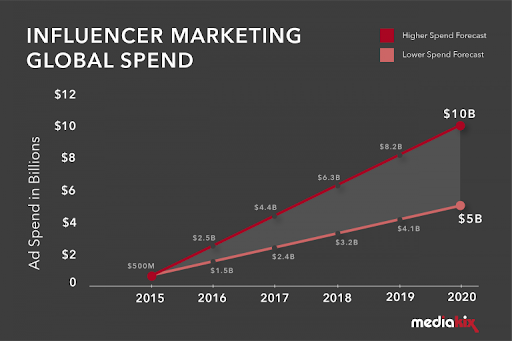
You may be loyal to specific retail businesses because your values and personality match up with theirs, and I’m sure you follow influencers on Facebook, Instagram, or Twitter whose message and values you align with, just like me.
Priorities and motivations – This will help you understand what triggers customers to buy your product. For some, it may be price, but for others, it may be because they are looking for a solution to their problem.
During surge periods, an Uber taxi can cost as much as 10x more than a regular cab, but that has not stopped people choosing Uber over regular cabs in New York.
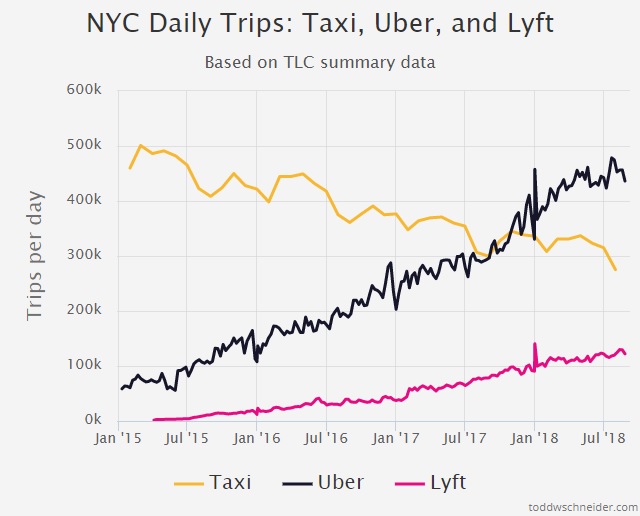
Uber may cost more at peak hours, but the price is not the main motivator for its clients. It’s convenience.
Without having to call anyone or wait outside for a taxi to pass by, users can open the app, put in their location and destination, receive a price, and visually see where the Uber is on the app.
Price is a crucial motivator overall, yet focusing on price as your sole unique selling proposition can make you highly exposed and require substantial economies of scale, e.g. do you think you can go head to head with Walmart on price? Probably not. Yet…could you go head to head on Walmart with quality? Absolutely.
The more non-price dependent factors you can sell on, the more ability you’ll have the increase your margins and boost lifetime value.
When to Use Psychographic Segmentation
Psychographic segmentation is best used to create a brand message and help you pivot your product to focus on the right benefits.
Once you carry out psychographic marketing segmentation, you should have the following set of data on your audience:
- Pain points they face in life right now
- What they value
- Objections they have against your brand
- The value that your service provides them
When I worked with a meal plan delivery service, I conducted psychographic marketing segmentation on their ideal customer. Below, I have listed the results I found from my segmentation.
Ideal customer – Family of four, with both parents working full time.
What pain points do they face? – They are time-poor due to work, and come home so tired that they don’t want to spend an hour cooking dinner.
They often end up ordering fast food which makes them unhealthy and unhappy because they know they should not be eating this on a daily basis. They are also bored of eating the same food.
What do they value? – They value spending time together as a family, whether at the dinner table or outdoors. They are aware of the importance that eating healthy food has on their own health and that of their children’s.
They value healthy food that is free of chemicals and toxins but which come at a lower price.
Objections against our brand? – They have tried meal plan services in the past that did not live up to their expectations, and their children did not enjoy the meals because the meals only catered to adults.
The value our service provides? – We provide over 24 weekly dishes to choose from, including specialist children’s menus. All meals are chemical and toxin free. Meals are made on the morning of delivery and delivered to their door. They only need to heat and eat.
If you can answer these four questions with a good degree of accuracy, then you have created your marketing message. To obtain this data, you can do the following:
- Customer surveys
- Focus groups
- Questions and answers
- Sign up to sites such as Brandwatch, Frrole Scout, and Crimson Hexagon
When it comes to finding these audiences online, there’s no better platform than Facebook as it lets you target people with an interest in just about anything.

Real-Life Examples of Psychographic Marketing Segmentation in Use
To carry on with the food example, here’s food brand Palseo Robbie using psychographic messaging to align their brand values with the customer:
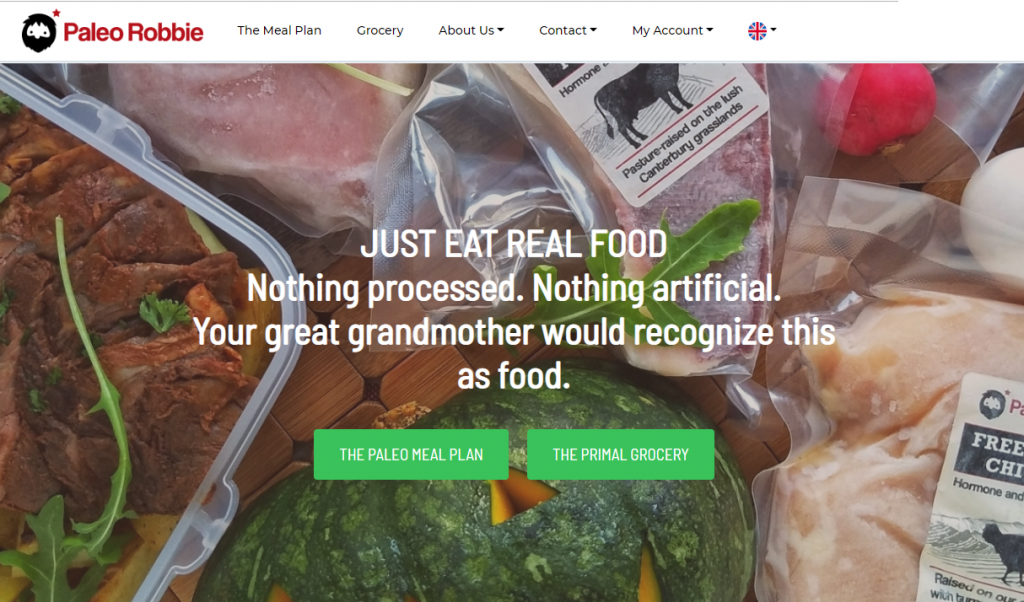
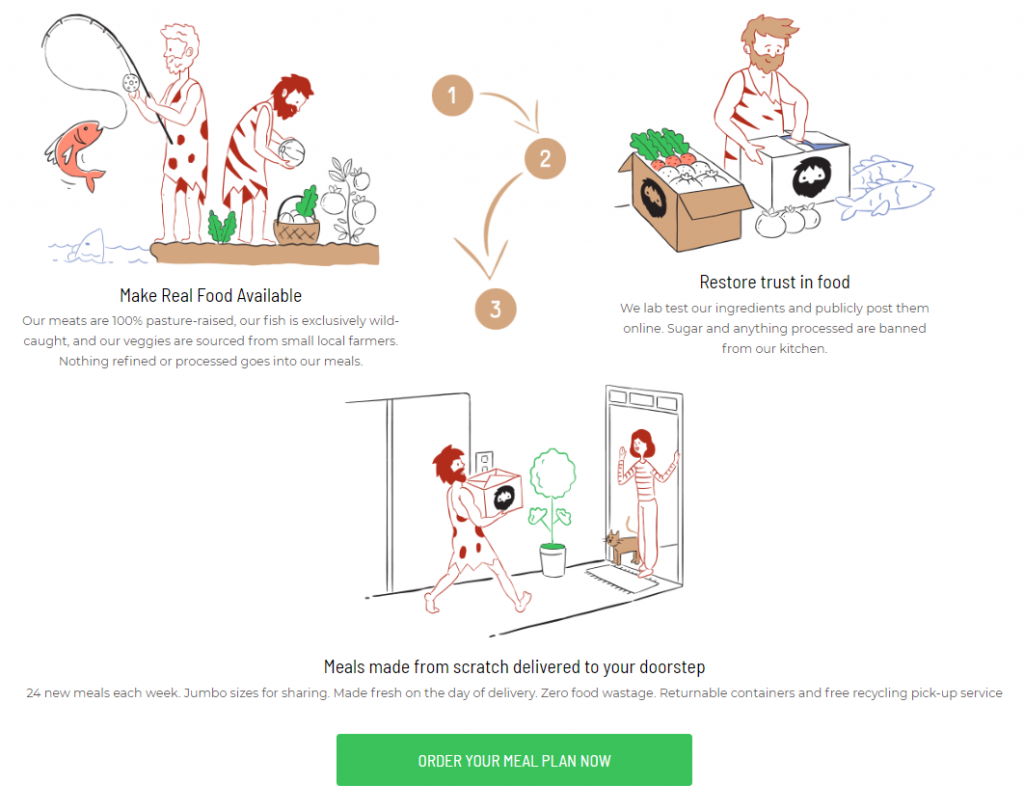
There’s no mention of a special offer or discount. It focuses on the problems their clients face and the solutions they provide.
Compare this to Fitness Kitchen who have used psychographic marketing segmentation by price as the main focus in their messaging:
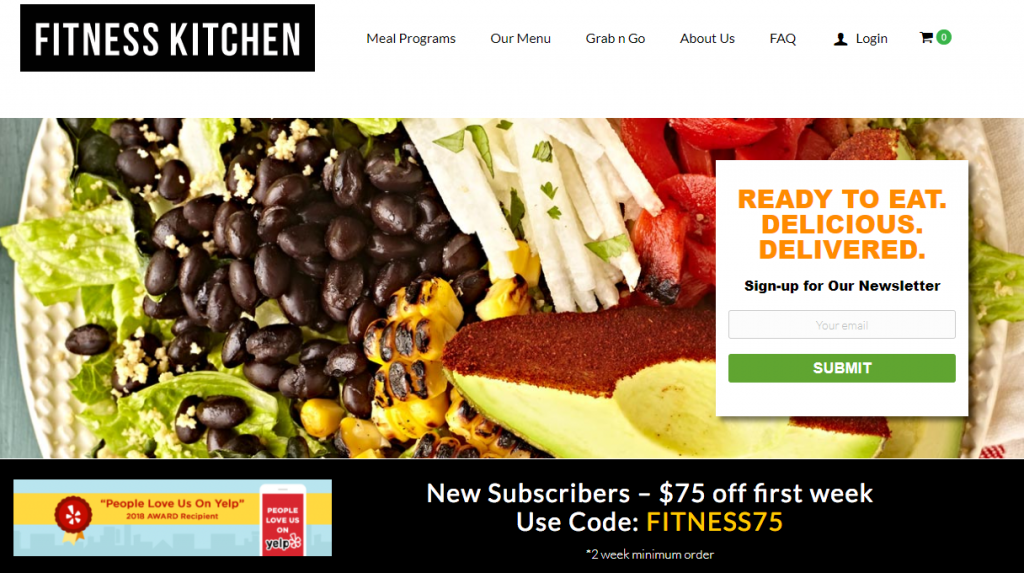
I’m not a big fan of using pricing psychographic marketing segmentation (targeting shoppers who love offers) as it brings the wrong type of customer who is only there for the discount, and you never want discounts to be your main competitive edge. Unless you plan to run a Groupon-like business whose USP is to find the best deals, it’s best to avoid this type of segmentation.
There’s nothing wrong with using pricing psychographic segmentation to get customers through the door, but it’s better used as a secondary message than a primary message.
Paleo Robbie do provide a voucher code for first-time users, but they only show the offer AFTER you have visited their website and have not placed an order within seven days.

Car manufacturer Tesla is an industry disruptor and a pioneer in producing electric cars. Here’s what you can find in their brand guidelines:
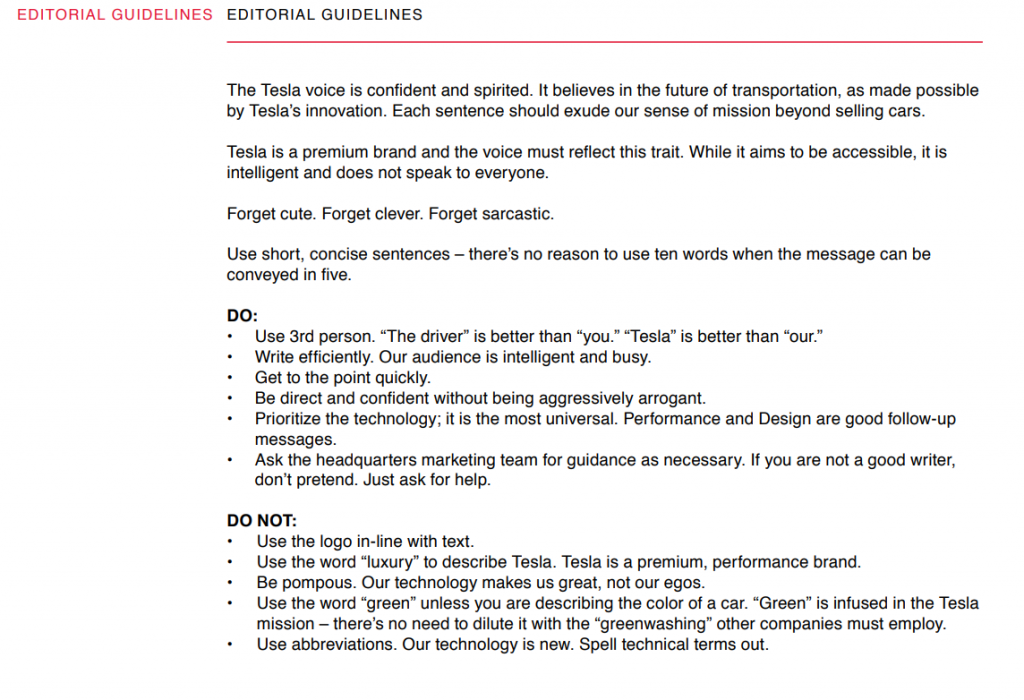
They state that their target audience is “intelligent” and “busy” and that they should not sound “pompous” in their marketing materials, nor should they use the word “luxury” to describe their product.
They are not going after an audience that is thinking about buying a Ferrari or Lamborghini; they are going after an audience that believe in what the brand is trying to achieve.
Summary
Nailing psychographic marketing segmentation is your key to truly understanding what makes your customers tick. When you start understanding the true motivations, wants and desires of your customers, you can start crafting an experience that better converts new customers AND a backend flow that means your relationship moves well beyond that first purchase.
The less you know about your customers, the more you’ll be selling in a commoditized fashion, e.g. on price. This will make your position far more vulnerable and easy to replicate.
Psychographic segmentation is one of those aspects of a business that is truly non-negotiable for those looking to level up and…all you’ve got to do is start chatting to your existing customers : )
—
How do you approach your marketing segmentation efforts? If you’ve found a winning formula for slicing and dicing your audience, we’d love to hear about it. Please add your thoughts in the comments below!
Companies our team has worked with:











